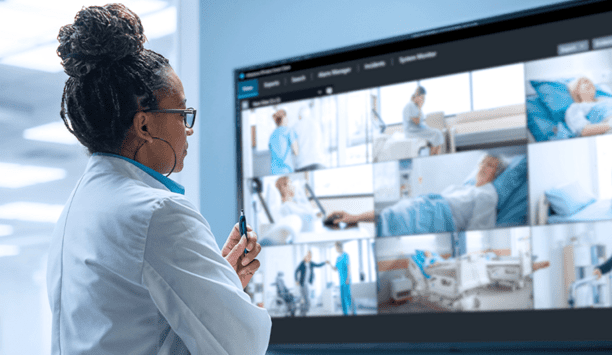Amongst the many negative consequences of the pandemic is a rise in violent and abusive behaviour across society. Health workers have experienced it on a regular basis. So too have police officers and public transport workers. Unfortunately, violence and abuse towards shop workers is also endemic in British society.
To address this problem which, in truth, has been on the rise since long before the emergence of COVID-19, we need better deterrents. The ability to prosecute these offences is one such deterrent, but just as important is the ability to deescalate situations before they spill over into unacceptable or unlawful behaviour.
Major retail customers
In both instances, organisations of all sizes are now recognising that the answer could involve greater use of rapidly advancing body worn camera technology. Andy Marsh, the Chief Constable of Avon and Somerset Police, is one of the police officers responsible for introducing body worn cameras to the UK police force, where they are now in widespread use.
Andy Marsh is one of the police officers responsible for introducing body worn cameras to the UK police force
He explains that “The reason the majority of people don’t speed or drink-drive is that rational human beings weigh up the risk and consequences of breaking the law and getting caught. Body worn cameras help provide appropriate ‘desistance’, especially where there are forward-facing screens so the person interacting with the wearer can see themselves and their behaviour.” Evidence shows that if a forward-facing camera is switched on before the intervention becomes hostile, it will generally lead to a de-escalation – as often as 90% of the time, according to one of our major retail customers.
Digital evidence investigations
Only a tiny handful of abusive incidents ever translate into arrests and prosecutions. A key issue is a lack of clear evidence – how to get past the usual impasse of one person’s word against the other. Body worn cameras break the deadlock and allow organisations to report incidents to the police with confidence, knowing that they will lead to action. Marsh suggests that “We usually see an earlier admission, an earlier guilty plea and a more appropriate sentence, where body worn camera footage is in play.”
The technology has come on in leaps and bounds in recent years. For example, it’s now possible to record high-definition footage on a lightweight device that’s barely the size of a palm. And it’s not just about the evidence organisations gather themselves. Many police forces are looking at ways to make it easier for businesses and the public to collaborate on digital evidence investigations.
Body worn cameras
This is good for the victims of crime because it means we get the evidence more quickly"
“We’ve created an online crime portal in Avon and Somerset which people can use to pass digital evidence and material to us without an officer having to attend their premises. This is good for the victims of crime because it means we get the evidence more quickly and can take action more swiftly to resolve that issue,” adds Marsh.
Our body worn cameras can now even support facial recognition thanks to new, smart AI on the devices themselves, which can scan and process faces within a three-metre distance against a pre-defined database of people (which we call a watchlist). Any matches trigger alerts or additional camera activity such as recording and streaming, while the facial recognition data of people not on the watchlist itself is not recorded or saved to assuage privacy concerns.
Similar criminal behaviour
Where could this technology come in handy? Well, staff at gambling venues or in-store retail workers could undoubtedly benefit from the ability to quickly spot known fraudsters or addicts who have requested that venues refuse their custom. Stewards at mass sporting events could play a key role in helping to identify people who have been banned from attending.
The primary reason for using body worn cameras is to increase the safety of frontline workers
The primary reason for using body worn cameras is to increase the safety of frontline workers, deescalating confrontations and limiting the use of force. AI-powered facial recognition can also serve this purpose by helping them make better-informed choices about how to handle specific situations. For example, it is a massive advantage to police officers on the beat to understand that the person they are dealing with may have a history of similar criminal behaviour.
Facial recognition technology
But it’s also an advantage within retail, where aggressive incidents are on the rise and staff need all the help they can get to determine what an appropriate response should be to a particular customer incident. In fact, extensive consultation with our retail, police, transport and gambling customers indicates that introducing facial recognition technology to body worn cameras could be instrumental, not just in helping to prevent crime, but in tracking down vulnerable and missing people too.
Of course, facial recognition technology has to be balanced against the need to protect the privacy of ordinary citizens. Video recording using body worn cameras has to be done proportionately – the same is true for the use of facial recognition technology. The technology also has to be compliant with GDPR, Data Protection, the Information Commissioners recommendations and so on.
Positive working environment
Violent and abusive incidents affect everyone in the immediate vicinity and create a culture of fear
Importantly, it should be for a specific, proportionate and justifiable reason which, of course, means it should never be used for indiscriminate mass surveillance. Every organisation using this technology must remember that a facial recognition system match is not proof of someone’s identity, but rather, an indication of likelihood to help inform the user rather than dictate the course of action.
Violent and abusive incidents affect everyone in the immediate vicinity and create a culture of fear and apprehension. This is why it’s so important to get on top of the problem – both on a societal and at an organisational level. Body worn cameras have a vital role to play, as an evidence-gathering tool and as a deterrent that empowers the wearer and creates a more positive working environment.
Deterring unlawful behaviour
One of the critical roles these cameras play is in staff training, providing real-world video evidence that can be used to educate and upskill workers across a variety of industries. Society’s problem with abusive and violent behaviour cannot be solved by technology alone.
But with exceptional quality camera footage now a reality, and the possibility of AI technology at the device level in real-time, body worn cameras will only get better at deterring unlawful behaviour and helping to protect hardworking frontline staff. Alasdair Field is CEO of video technology provider Reveal, which works with UK police forces and major brands such as Matalan, JD Sports and Boots to help them improve staff safety, deescalate confrontations and reduce violent and abusive incidents.








